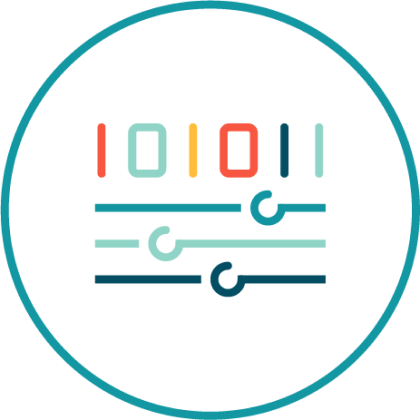Multimodal data that includes images, structured and unstructured clinical data, genomic data, and electrocardiograms allow researchers to adopt a comprehensive approach to study important diseases like cardiomyopathy.
Leveraging multimodal data to analyze cardiomyopathy
Leveraging multimodal data to analyze cardiomyopathy
Overview

Challenge
Cardiomyopathy (CM) is a broad term for diseases that adversely impact heart muscle, which can disrupt oxygen flow to the body and cause heart failure (HF). Like other diseases, research into the causes of CM, patient outcomes, and interventions can be significantly enhanced using different kinds of real-world clinical, genomic, imaging, and electrocardiogram (ECG) data. ECG and cardiac imaging data are particularly important for CM, as ECGs are often used for diagnosis and images can define remodeling underlying CM.
NashBio worked with a client to provide a variety of multimodal CM data to better define how cardiac tissue is remodeled during CM and determine genetic CM factors.
At a Glance
ECG waveforms
NYHA
classification from notes
unique DNA samples with 250k whole genomes sequenced
imaging studies
Our Impact
We initially worked with our client to refine a cohort that would be ideal for their multimodal research, ensuring that the cohort had imaging, genetic, as well as structured and unstructured EHR data.
During the cohort selection process, our clinical team performed chart reviews to identify New York Heart Association Functional Classes of Heart Failure as well as cardiovascular family history. Imaging data included cardiac echocardiograms and MRIs, while genomic data included both array and WGS sequences.
Using this data, our client is working to determine the genetic causes of CM and how CM impacts heart tissue. Our data and expertise would be applicable for similar types of research into other diseases, especially those that benefit from multimodal data.
Nashbio Differentiators

Enriched Phenotypes

Demographically Diverse

Multimodal & Multi-Omic Data
Our Impact
We initially worked with our client to refine a cohort that would be ideal for their multimodal research, ensuring that the cohort had imaging, genetic, as well as structured and unstructured EHR data.
During the cohort selection process, our clinical team performed chart reviews to identify New York Heart Association Functional Classes of Heart Failure as well as cardiovascular family history. Imaging data included cardiac echocardiograms and MRIs, while genomic data included both array and WGS sequences.
Using this data, our client is working to determine the genetic causes of CM and how CM impacts heart tissue. Our data and expertise would be applicable for similar types of research into other diseases, especially those that benefit from multimodal data.
Nashbio Differentiators

Enriched Phenotypes

Demographically Diverse

Multimodal & Multi-Omic Data

Identifying drug targets for pain relief

Improving AI-guided clinical decision support


